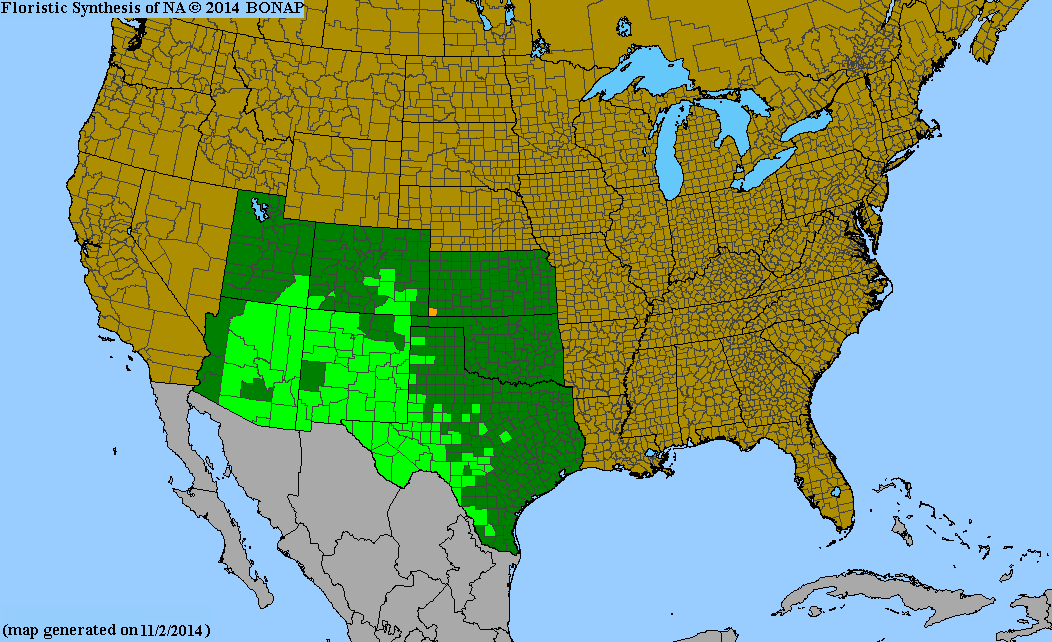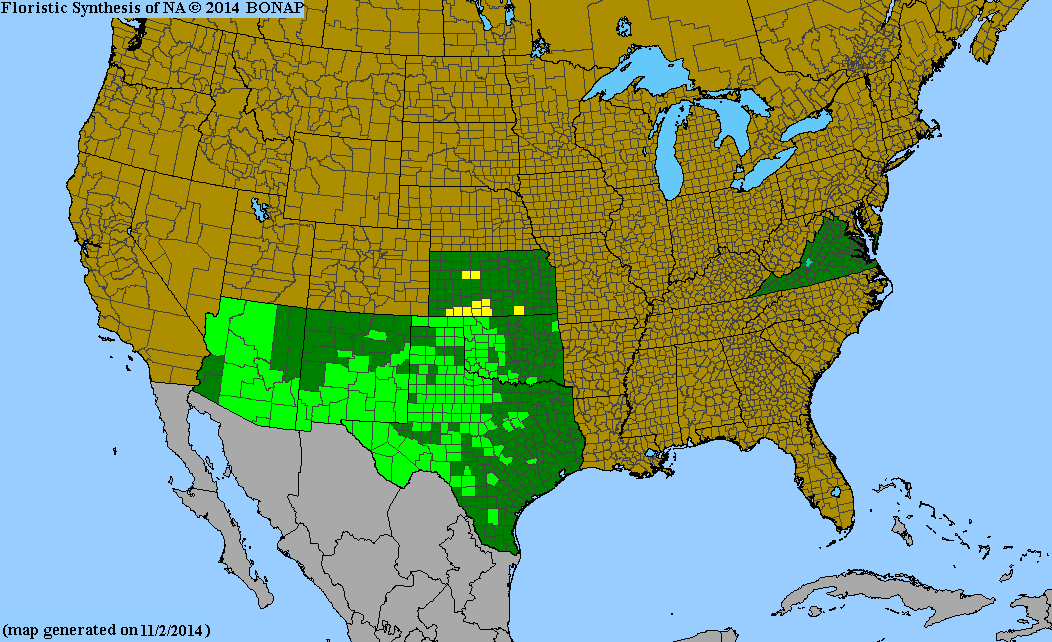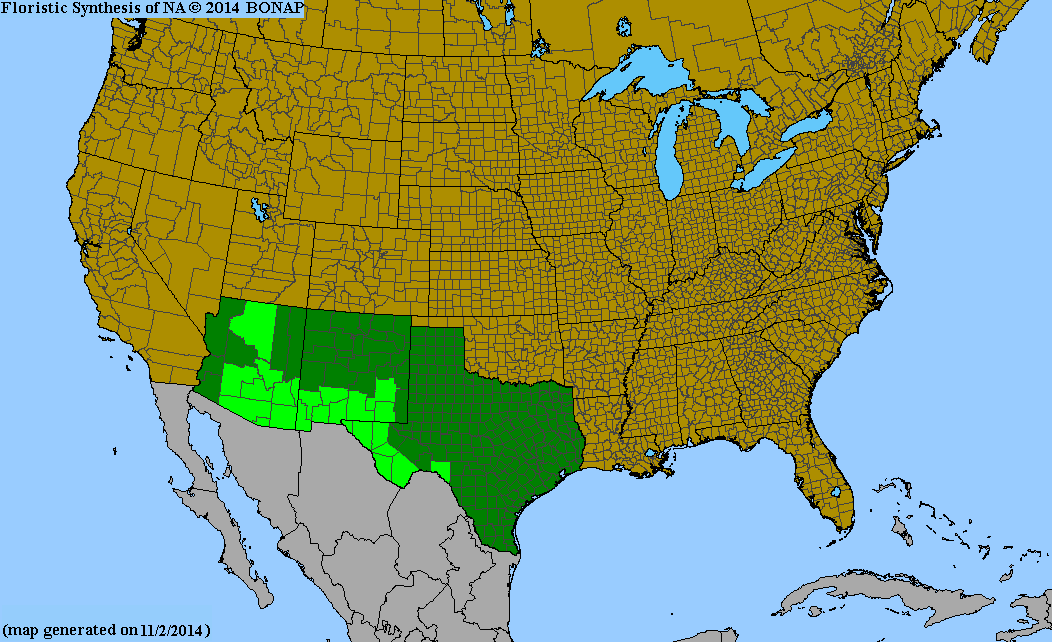Click on the images below to see larger versions.
| Scientific Name | Physaria fendleri (Lesquerella fendleri) | USDA PLANTS Symbol | LEFE |
| Common Name | Fendler's Bladderpod | ITIS Taxonomic Serial No. | 823239 |
| Family | Brassicaceae (Mustard) | SEINet Reference |
Click Here |
| Description | Habitat: Dry sandy, rocky, calcareous soils; prairies, slopes and mesas. Plant: Short sprawling perennial with several stems up to 16 inches long, sometimes branched; stems and leaves with many small hairs giving a silvery appearance. Leaves: Basal leaves (if present) up to 3 inches long and 1/2-inch wide, linear to elliptic, petiolate, margins entire or coarsely dentate; stem leaves alternate, up to 1 inch long, short-petiolate, linear to narrowly oblanceolate, margins entire or coarsely dentate. Inflorescence: Terminal raceme with bright yellow flowers up to 1 inch across with 4 spreading petals and 4 oblong to elliptic sepals. Bloom Period: February to August. Fruit: Smooth round capsules about 0.2 to 0.3 inches long with a slightly pointed tip; often becoming reddish with age. References: "Manual of the Vascular Plants of Texas" by Correll and Johnston, "Wildflowers of Texas" by Geyata Ajilvsgi and SEINet. |
BONAP Distribution Map |
Texas Status: Native |
| Scientific Name | Physaria gordonii (Lesquerella gordonii) | USDA PLANTS Symbol | LEGO |
| Common Name | Gordon's Bladderpod | ITIS Taxonomic Serial No. | 823240 |
| Family | Brassicaceae (Mustard) | SEINet Reference |
Click Here |
| Description |
Habitat: Sandy or light soils in rocky plains, caprock ledges, gravelly brushland, sandy desert washes, stream bottoms, pastures, roadsides. Plant: Upright annual with several erect to decumbent, branched or unbranched stems; 18 inches tall; dense, short hairs covering stems and leaves. Leaves: Basal leaves elliptic to obovate 3/4 to 2 inches long, petiolate and margins lyrate-pinnatifid, or entire or dentate; stem leaves linear to oblanceolate 3/8 to 2-3/4 inches long, lower ones sometimes short-petiolate, upper sessile, margins of lower leaves repand or shallowly dentate, upper leaves entire. Inflorescence: Dense terminal racemes of numerous yellow to orange flowers each about 1/2-inch across; 4 cuneate to obovate petals and 4 elliptic or oblong sepals. Bloom Period: March to June. Fruit: Globular to ellipsoid capsules up to 1/3-inch across on straight, S-shaped or recurved pedicels 3/8 to 1-3/16 inches long. References: SEINet, "Wildflowers of Texas" by Michael Eason and "Manual of the Vascular Plants of Texas" by Correll and Johnston. |
BONAP Distribution Map |
Texas Status: Native |
| Scientific Name | Physaria purpurea | USDA PLANTS Symbol |
|
|
| Common Name | White Bladderpod, Rose Bladderpod | ITIS Taxonomic Serial No. |
|
|
| Family | Brassicaceae (Mustard) | SEINet Reference |
SEINet Reference | |
| Description |
Habitat: Canyons, rocky hillsides, ledges, crevices, streambeds, shady areas in deserts. Plant: Upright perennial up to about 2 feet tall; short, rough hairs on stems and leaves. Leaves: Basal rosette of blue-green leaves, blades elliptic or obovate to oblong, 1-1/2 to 5-1/2 inches long, wavy, toothed or smooth edges; stem leaves broadly elliptic to obovate or rhombic, 1/4 to 1-1/4 inches long, hairy, smooth edges. Inflorescence: Clusters of a few blossoms at branch tips in racemes; blossoms about 1/2-inch across with 4 petals, white but becoming purple; with 4 green, elliptic, hairy sepals. Bloom Period: January to May. References: SEINet and www.americansouthwest.net. |
BONAP Distribution Map |
Texas Status: Native |














